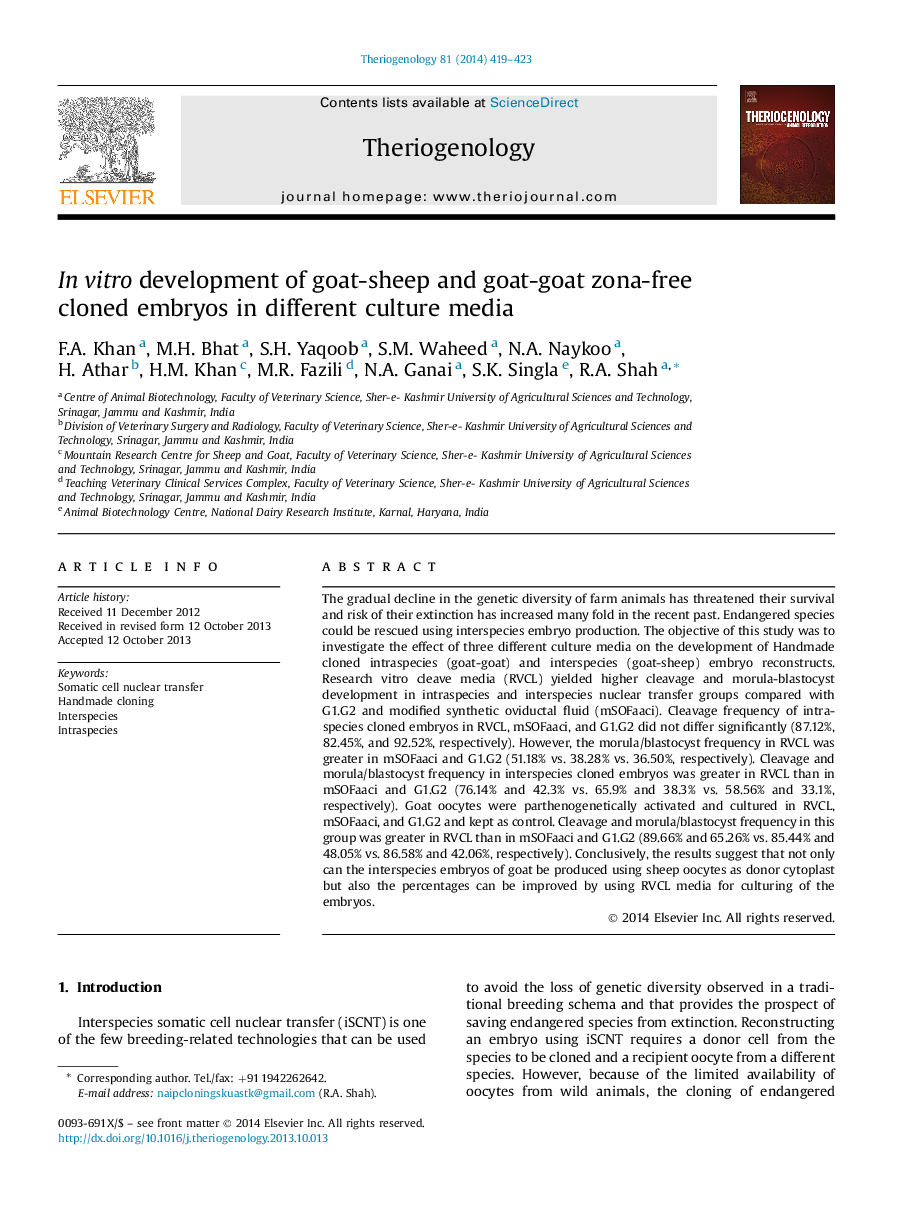| Article ID | Journal | Published Year | Pages | File Type |
|---|---|---|---|---|
| 2097554 | Theriogenology | 2014 | 5 Pages |
The gradual decline in the genetic diversity of farm animals has threatened their survival and risk of their extinction has increased many fold in the recent past. Endangered species could be rescued using interspecies embryo production. The objective of this study was to investigate the effect of three different culture media on the development of Handmade cloned intraspecies (goat-goat) and interspecies (goat-sheep) embryo reconstructs. Research vitro cleave media (RVCL) yielded higher cleavage and morula-blastocyst development in intraspecies and interspecies nuclear transfer groups compared with G1.G2 and modified synthetic oviductal fluid (mSOFaaci). Cleavage frequency of intraspecies cloned embryos in RVCL, mSOFaaci, and G1.G2 did not differ significantly (87.12%, 82.45%, and 92.52%, respectively). However, the morula/blastocyst frequency in RVCL was greater in mSOFaaci and G1.G2 (51.18% vs. 38.28% vs. 36.50%, respectively). Cleavage and morula/blastocyst frequency in interspecies cloned embryos was greater in RVCL than in mSOFaaci and G1.G2 (76.14% and 42.3% vs. 65.9% and 38.3% vs. 58.56% and 33.1%, respectively). Goat oocytes were parthenogenetically activated and cultured in RVCL, mSOFaaci, and G1.G2 and kept as control. Cleavage and morula/blastocyst frequency in this group was greater in RVCL than in mSOFaaci and G1.G2 (89.66% and 65.26% vs. 85.44% and 48.05% vs. 86.58% and 42.06%, respectively). Conclusively, the results suggest that not only can the interspecies embryos of goat be produced using sheep oocytes as donor cytoplast but also the percentages can be improved by using RVCL media for culturing of the embryos.
